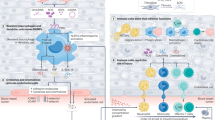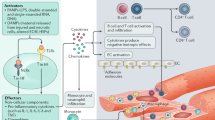Abstract
Since depression of myocardial contractility forms the basis for the development of heart failure, many attempts have been made to enhance the inotropic state of the failing heart by cardiotonic agent as the therapeutic modality. However, large scale clinical trials conducted in the Western societies revealed excess mortality in patients with heart failure received long-term treatment with inotropic agent. Therefore, all of these agents are now regarded as unsuitable for chronic heart failure treatment. In contrast, some inotropic agents with phosphodiesterase inhibitory properties exhibited potential benefits in Japanese patients. In Japan mortality due to heart disease is substantially lower than that found in all other Western countries. Thereby, chronic treatment with inotropic agent may be justified as the optimal care in the context of relief of symptoms and an improved quality of life. The salutary effects of these phosphodiesterase inhibitorsappear to be related to anticytokine and immunomodulating effects as well as their cardiotonic action. These findings support the recent new concept that immune responses mediated by cytokines play an important role in the pathogenesis of heart failure.
Similar content being viewed by others
References
Sasayama S. Inotropic agents in the treatment of heart failure: Despair or hope? Cardiovasc Drugs Ther 1996;10:703–709.
Sasayama S, Inoue M, Asanoi H, et al. Acute hemodynamic effects of a new inotropic agent, OPC-8212, on severe congestive heart failure. Heart Vessels 1986;2:23–28.
Cavusoglu E, Fishman WH, Klapholz M. Vesnarinone: A new inotropic agent for treating congestive heart failure. J Cardiac Fail 1995;1:249–257.
Sasayama S, Matsumori A. Vesnarinone: A potential cytokine inhibitor. J Cardiac Fail 1996;2:251–258.
Sasayama S for OPC-8212 Multicenter Research Group. A placebo-controlled, randomized double blind study of OPC-8212 in patients with mild chronic heart failure. Cardiovasc Drugs Ther 1990;4:419–426.
Feldman AM, Bristow MR, Parmley WW, et al. for the Vesnarinone Study Group. Effects of vesnarinone on morbidity and mortality in patients with heart failure. N Engl J Med 1993;329:149–155.
Cohn JN, et al. for the Vesnarinone Trial Investigators. A dose-dependent increase in mortality with vesnarinone among patients with severe heart failure. N Engl J Med 1998;339:1810–1816.
Mathew L, Katz SD. Calcium sensitizing agents in heart failure. Drugs and Aging 1998;12:191–204.
Sasayama S, Asanoi H, Kihara Y, et al. Clinical effects of long-term administration of pimobendan in patients with moderate congestive heart failure. HeartVessels 1994;9:113–120.
The Pimobendan in Congestive Heart Failure (PICO) Investigators. Effect of pimobendan on exercise capacity in patients with heart failure: Main results from the Pimobendan in Congestive Heart Failure (PICO) trial. Heart 1996;76:223–231.
Sasayama S, for the EPOCH Study Group. Effects of pimobendan on adverse cardiac events and physical activities in patients with mild to moderate chronic heart failure— A randomized, placebo-controlled, double-blind, long-term study (EPOCH Study). Circulation 2002;66:149–157.
Sasayama S, Asanoi H, Ishizaka S, Miyagi K. Evaluation of functional capacity of patients with congestive heart failure. In: Yasuda H, Morgan HE, eds. New Aspects in the Treatment of Failing Heart. Tokyo: Springer-Verlag, 1992:113–117.
Baba S, Ozawa H, Sakai Y, Terao A, Konishi M, Tatara K. Heart disease deaths in a Japanese urban area evaluated by clinical and police records. Circulation 1994;89: 109–115.
Nakamura Y, Kawai C, Moss AJ, Sasayama S, et al. Comparison between Japan and North America in the post-hospital course after recovery from an acute coronary event. Int J Cardiol 1996;55:245–254.
Levine B, Kalman J, Mayer L, Fillit HM, Packer M. Elevated circulating levels of tumor necrosis factor in severe chronic heart failure. N Engl J Med 1990;323:236–241.
Matsumori A, Yamada T, Suzuki H, Matoba Y, Sasayama S. Increased circulating cytokines in patients with myocarditis and cardiomyopathy. Br Heart J 1994;72:561–566.
Kubota T, et al. for the VEST Investigators for TNF Genotype Analysis. Effects of tumor necrosis factor gene polymorphisms in patients with congestive heart failure. Circulation 1998;97:2499–2501.
McGowan GA, Mann DL, Kormos RL, Feldman AM, Murali S. Circulating interleukin-6 in severe heart failure. Am J Cardiol 1997;79:1128–1131.
Gulick T, Chung MK, Pieper SJ, Lange LG, Schreiner GF. Interleukin-1 and tumor necrosis factor inhibit cardiac myocyte beta-adrenergic responsiveness. Proc Natl Acad Sci USA 1989;86:6753–6757.
Balligand JL, Ungureanu-Longrois D, Simmons WW, et al. Cytokine-inducible nitric oxide synthase (iNOS) expression in cardiac myocytes: Characterization and regulation of iNOS expression and detection of iNOS activity in single cardiac myocytes in vitro. J Biol Chem 1994;269:27580–27588.
Oyama J, Shimokawa H, Morii H, et al. Role of nitric oxide and peroxynitrite in the cytokine-induced sustained myocardial dysfunction in dogs in vivo. J Clin Invest 1998;101:2207–2214.
Finkel MS, Oddis CV, Jacob TD, Watkins SC, Hattler BG, Simmons RL. Negative inotropic effects of cytokines in the heart mediated by nitric oxide. Science 1992;257:387–389.
Yokoyama T, Vaca L, Rossen RD, Durante W, Hazarika P, Mann DL. Cellular basis for the negative inotropic effects of tumor necrosis factor-alpha in the adult mammalian heart. J Clin Invest 1993;92:2303–2312.
Oral H, Mann DL. Sphingosine mediates the immediate negative inotropic effects of tumor necrosis factor-alpha in the adult mammalian cardiac myocyte. J Biol Chem 1997;272:4836–4842.
Krown KA, PageMT, Nguyen C, et al. Tumor necrosis factor alpha-induced apoptosis in cardiac myocytes. Involvement of the sphingolipid signaling cascade in cardiac cell death. J Clin Invest 1996;98:2854–2865.
Shioi T, Matsumori A, Sasayama S. Persistent expression of cytokine in the chronic stage of viral myocarditis in mice. Circulation 1996;94:2930–2937.
Lodge PA, Herzum M, Olszewski J, Huber SA. Coxsackievirus B-3 myocarditis: Acute and chronic forms of the disease caused by different immunopathogenic mechanisms. Am J Pathol 1987;128:455–463.
Yokoyama T, Nakano M, Bednarczyk JL, McIntyre BW, Entman M, Mann DL. Tumor necrosis factor-alpha provokes a hypertrophic growth response in adult cardiac myocytes. Circulation 1997;95:1247–1252.
Kishimoto C, Kuroki Y, Hiraoka Y, Ochiai H, Kurokawa M, Sasayama S. Cytokine and murine coxsackievirus B3 myocarditis: Interleukin-2 suppressed myocarditis in the acute stage but enhanced the condition in the subsequent stage. Circulation 1994;89:2836–2842.
Lin CS, Boltz RC, Blake JT, et al. Voltage-gated potassium channels regulate calcium-dependent pathways involved in human T lymphocyte activation. J Exp Med 1993;177:637–645.
Felzen B, Lavy R, Garcia M, Berke G, Gardner P, Binah O. Interaction of cytotoxic T lymphocytes and guinea pig ventricular myocytes: Pharmacological modulation by blocking K+ currents in cytotoxic T lymphocytes. Circ Res 1996;78:253–261.
Shioi T, Matsumori A, Matsui S, Sasayama S. Inhibition of cytokine production by a new inotropic agent, vesnarinone, in human lymphocytes, T cell line, and monocytic cell line. Life Sci 1994;54:PL11–PL16.
Matsumori A, Shioi T, Yamada T, Matsui S, Sasayama S. Vesnarinon, a new inotropic agent, inhibits cytokine production by stimulated human blood from patients with heart failure. Circulation 1994;89:955–958.
Iwasaki A, Matsumori A, Yamada T, Shioi T, Wang W, Ono K, Nishio R, Okada M, Sasayama S. Pimobendan inhibits the production of proinflammatory cytokines and gene expression of inducible nitric oxide synthase in a murine model of viral myocarditis. J Am Coll Cardiol 1999;33:1400–1407.
Matsumori A, Ono K, Sato Y, Shioi T, Nose Y, Sasayama S. Differential modulation of cytokine production by drugs: Implication for therapy in heart failure. J Mol Cell Cardiol 1996;28:2491–2499.
Matsumori A, Okada I, Shioi T, Furukawa Y, Nakamura T, Ono K, Iwasaki A, Sasayama S. Inotropic agents differentially inhibit the induction of nitric oxide synthase by endotoxin in cultured macrophages. Life Sci 1996;PL121–PL125.
Sasayama S. Immune modulation of cardiac function: A new frontier. Role of the immune system in cardiac dysfuction. J Cardiac Fail 1995;1:331–335.
Sasayama S, Matsumori A, Kihara Y. New insights into the pathophysiological role for cytokines in heart failure. Cardiovasc Res 1999;42:557–564.
Author information
Authors and Affiliations
Rights and permissions
About this article
Cite this article
Sasayama, S. Inotropic Agents and Immune Modulation. Cardiovasc Drugs Ther 16, 237–243 (2002). https://doi.org/10.1023/A:1020652506588
Issue Date:
DOI: https://doi.org/10.1023/A:1020652506588




